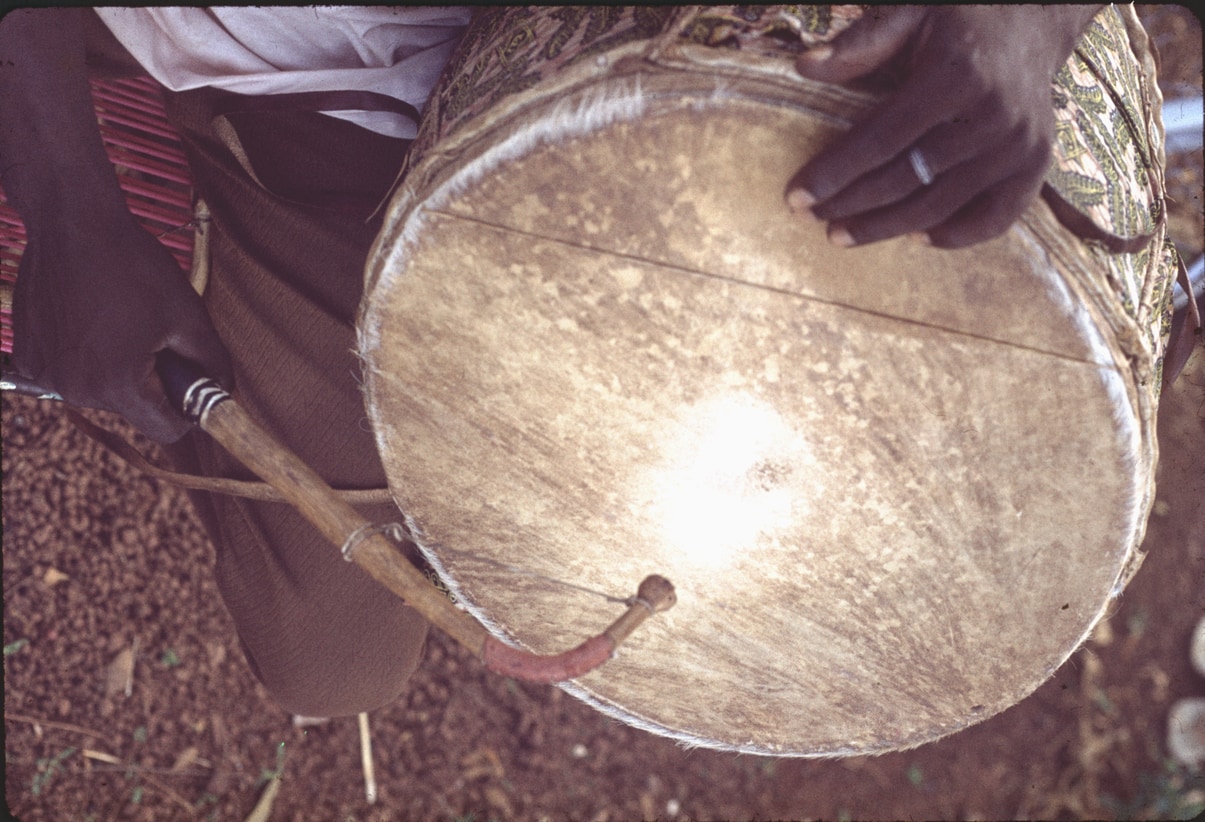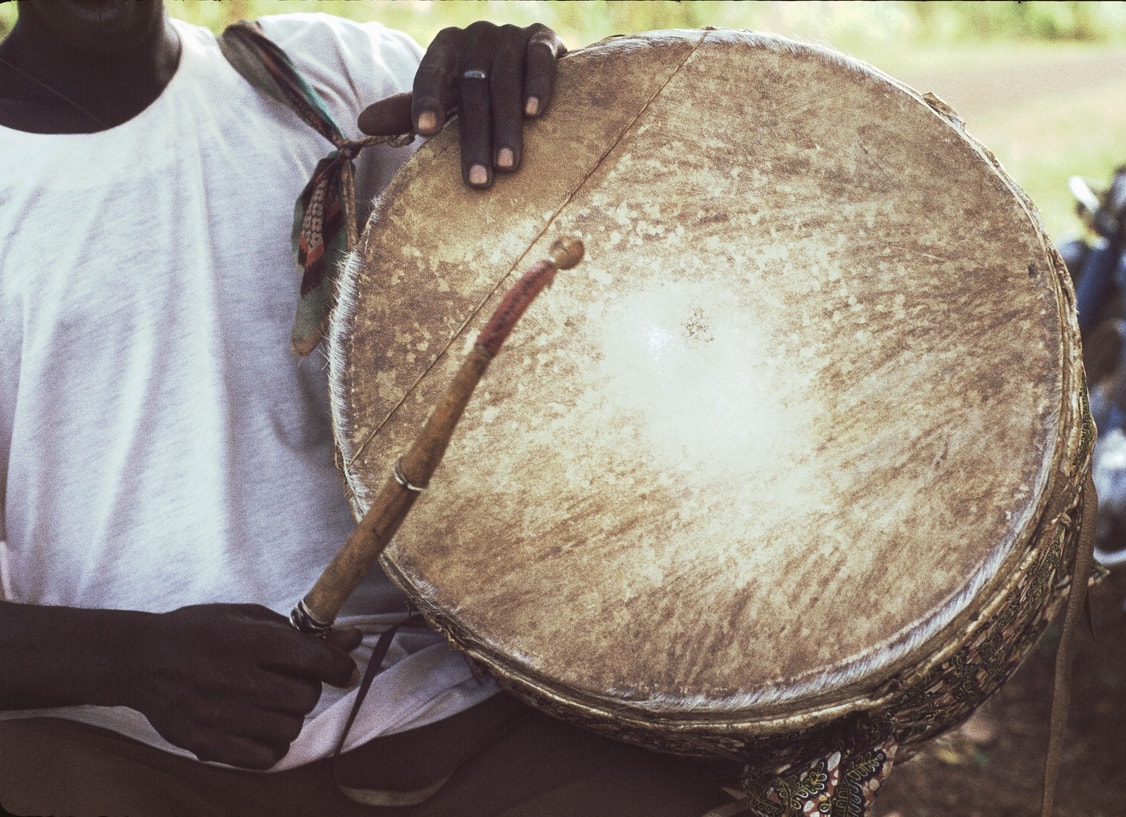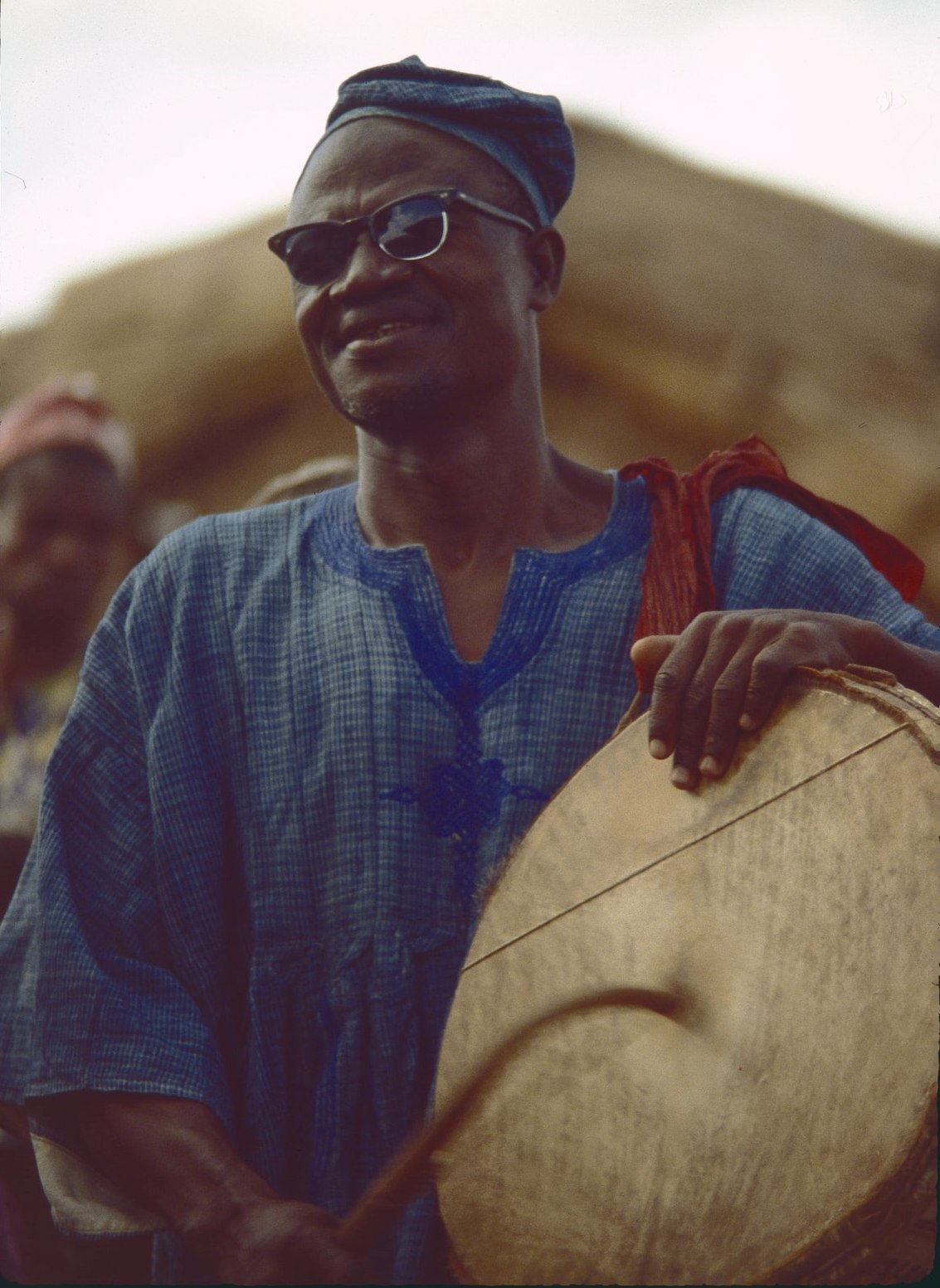Sewing a guŋgɔŋ: image gallery
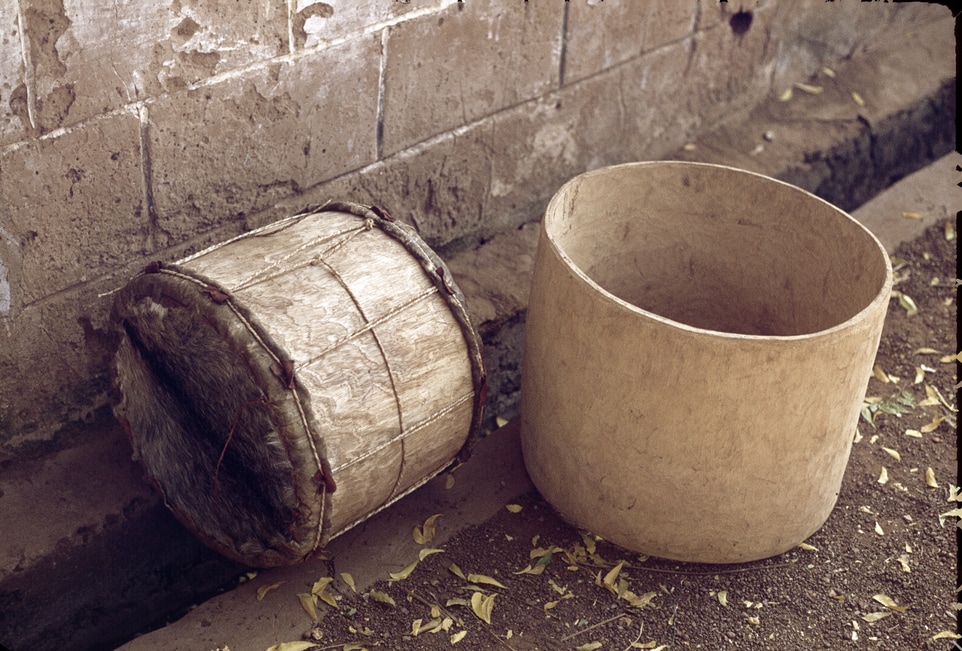
Carved guŋgɔŋ shell and shell with sewing completed.
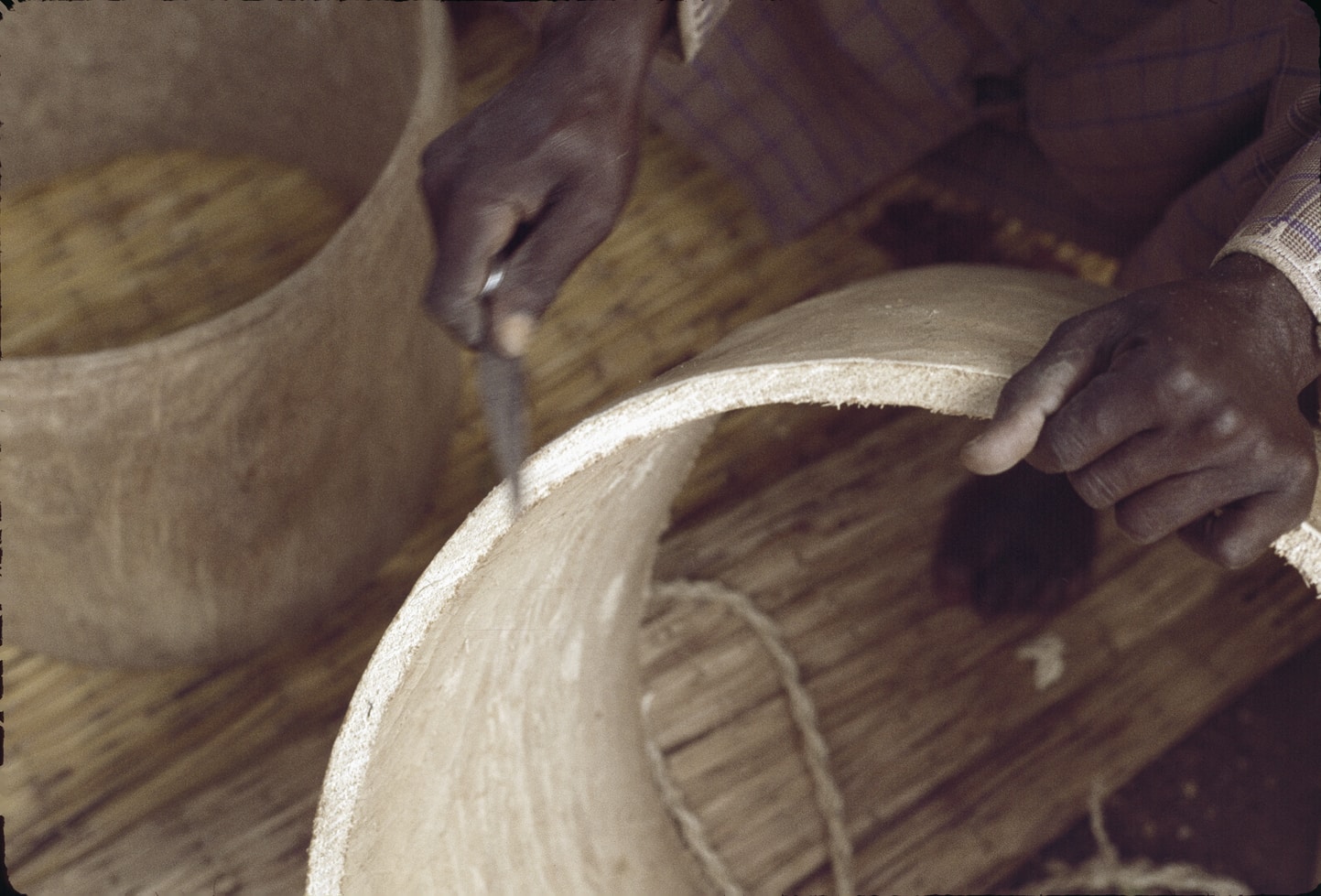
The mouth of the guŋgɔŋ is smoothed and cleaned.
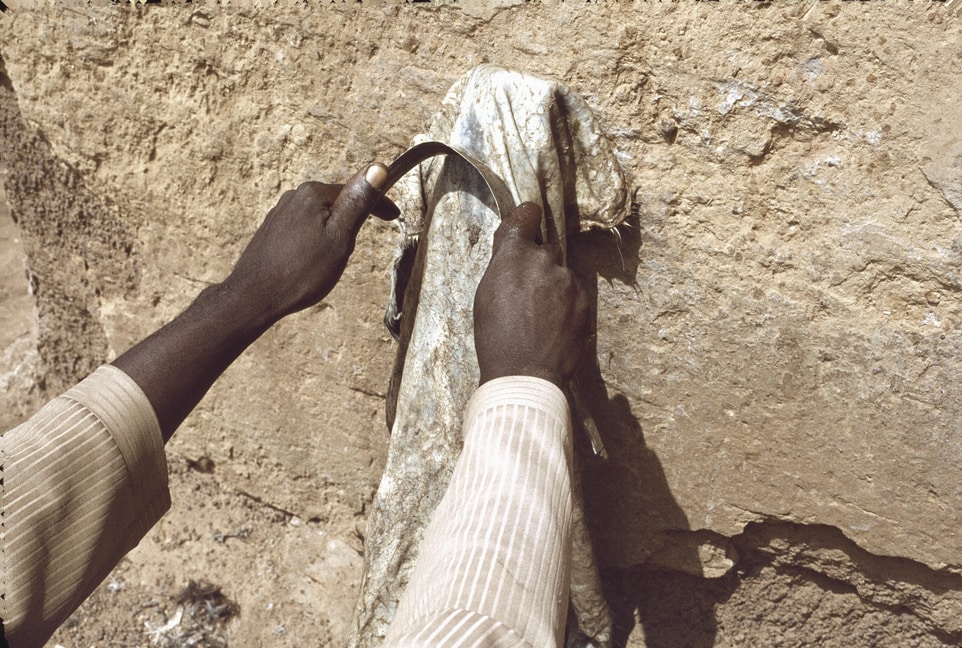
The inside of the skin for the drum is scraped and cleaned.
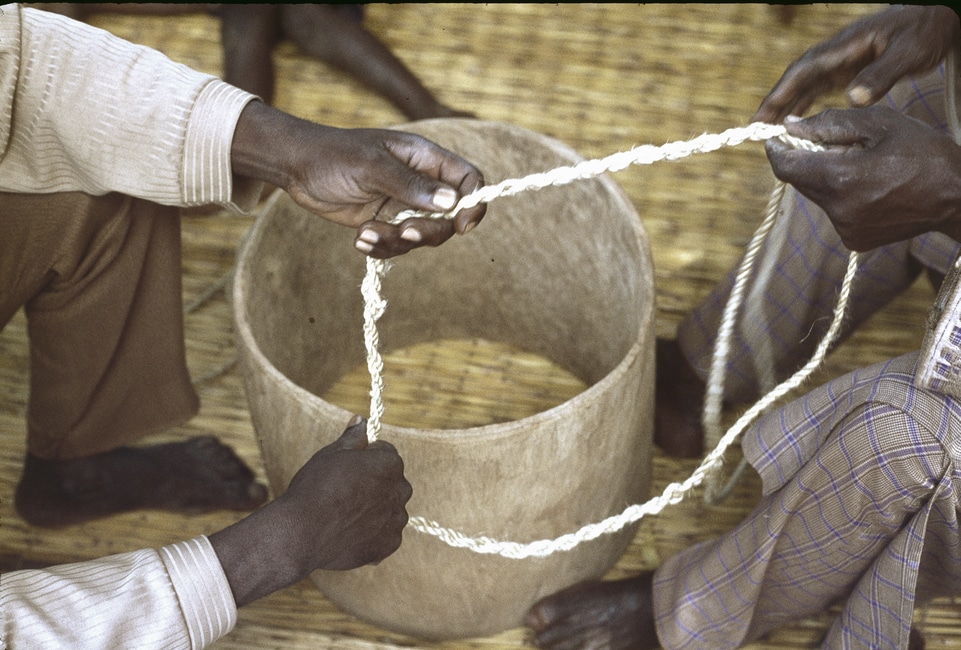
Two of the ropes (gabga) are joined together. The ropes are fitted to the size of the guŋgɔŋ's mouth.
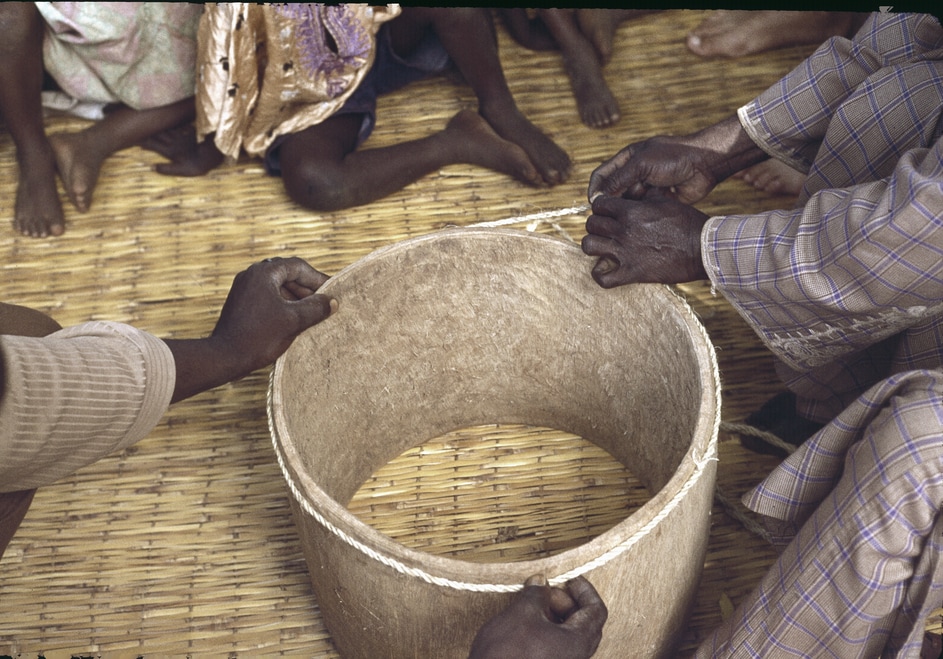
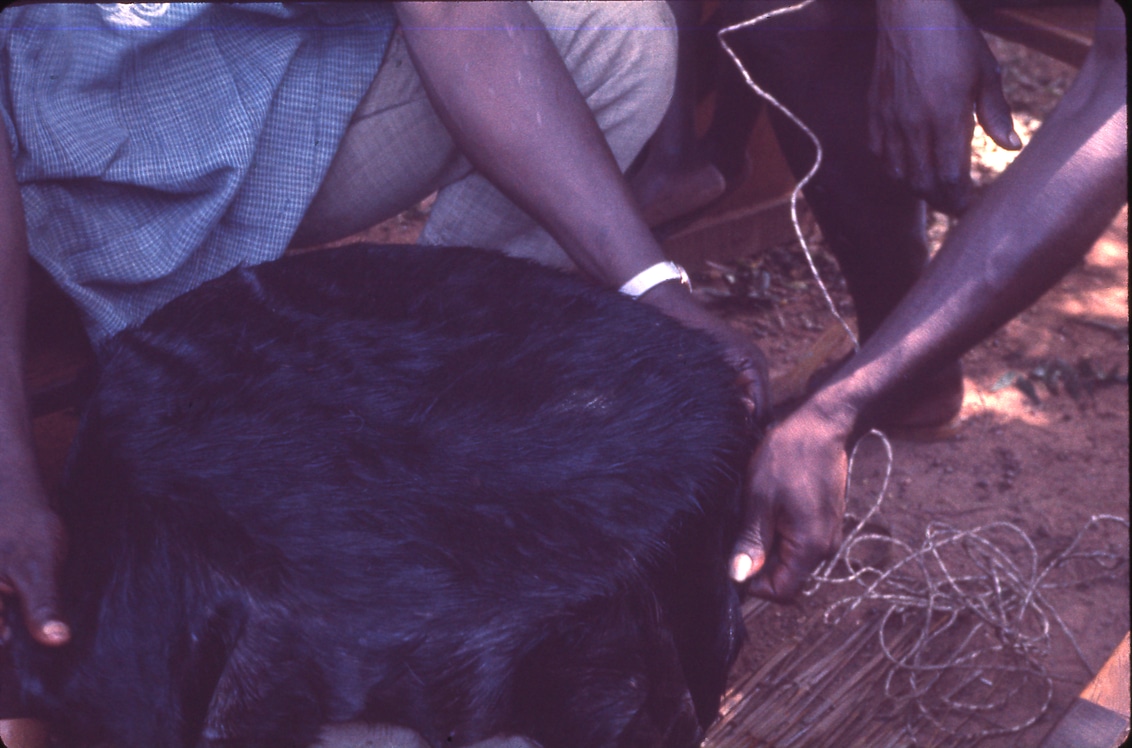
The skin is positioned on mouth and seated with the ropes.
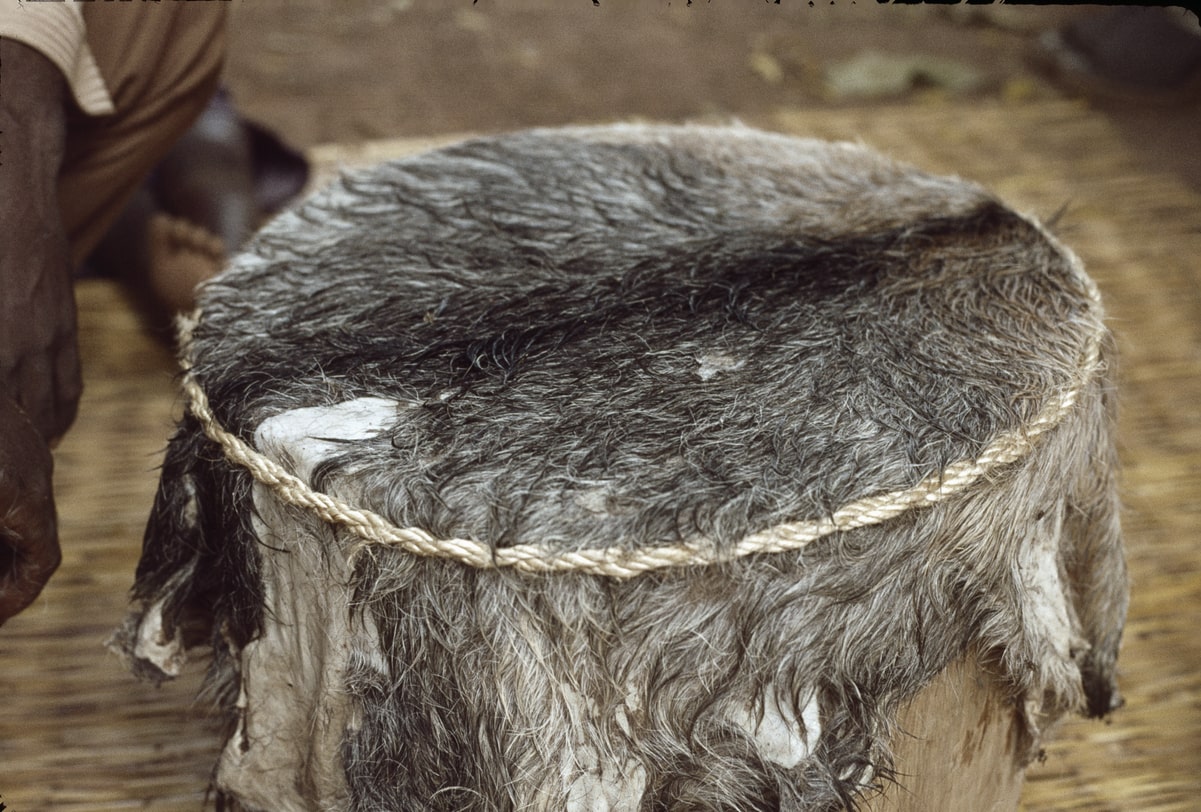
An awl punches holes for lacing with the gbandaa (strings made of hide).
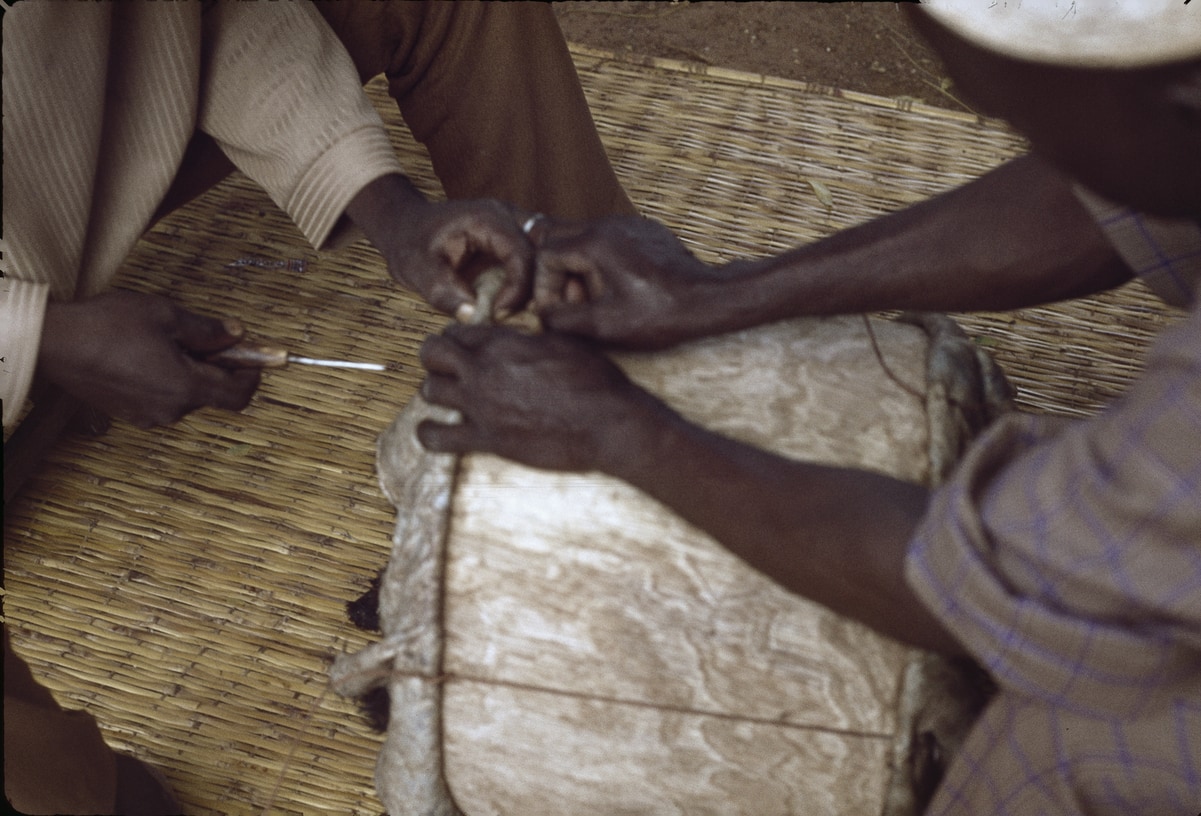
The gbandaa are pulled and the skin is pinched tightly against the rope. That is the seat of the guŋgɔŋ (gbankuɣra or guŋgɔŋ kuɣra). The protective pieces of skin (the gbanchirga) are clearly visible.
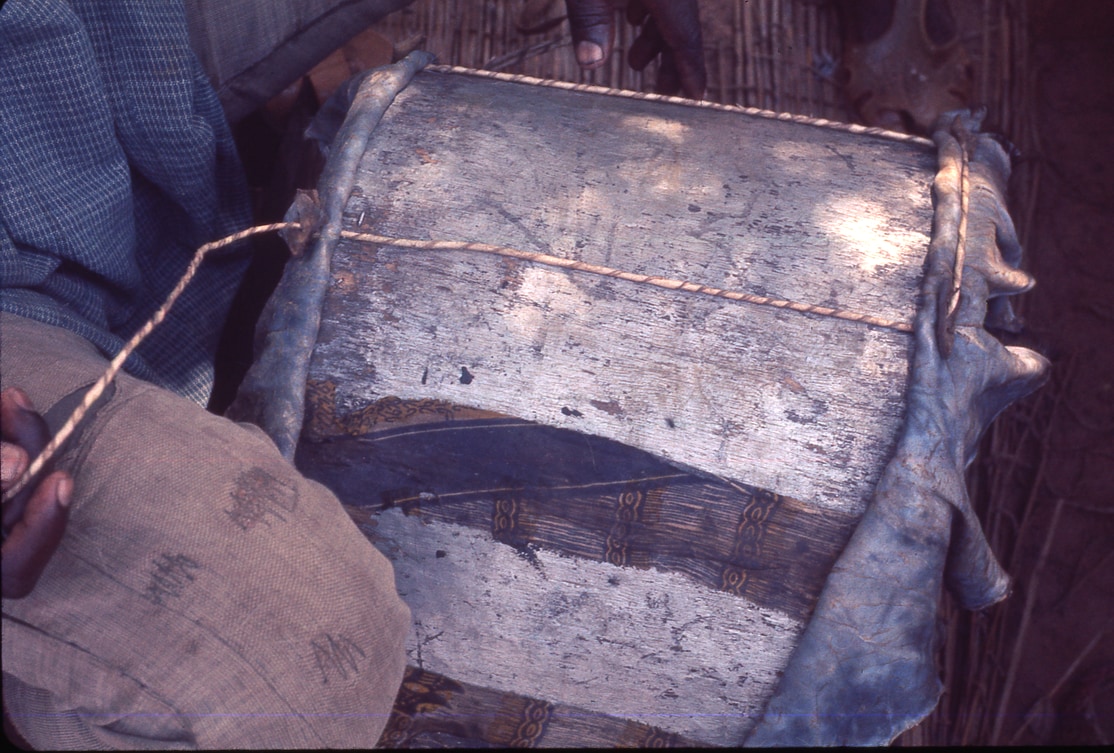
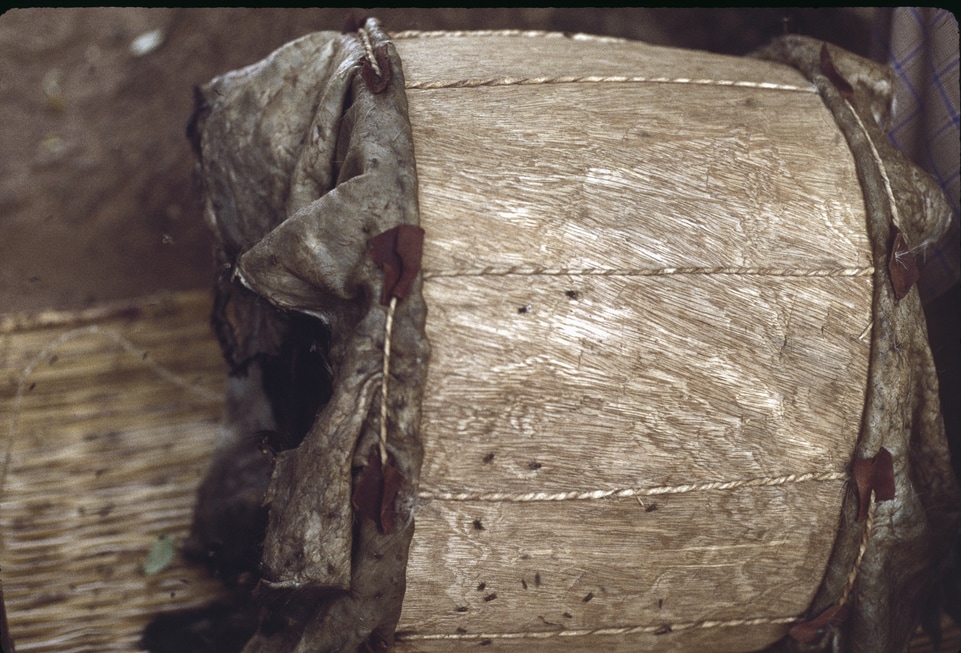
The sewing has reached halfway around the guŋgɔŋ. Sewing continues in the opposite direction. The leather string is pulled against the seat of the guŋgɔŋ.
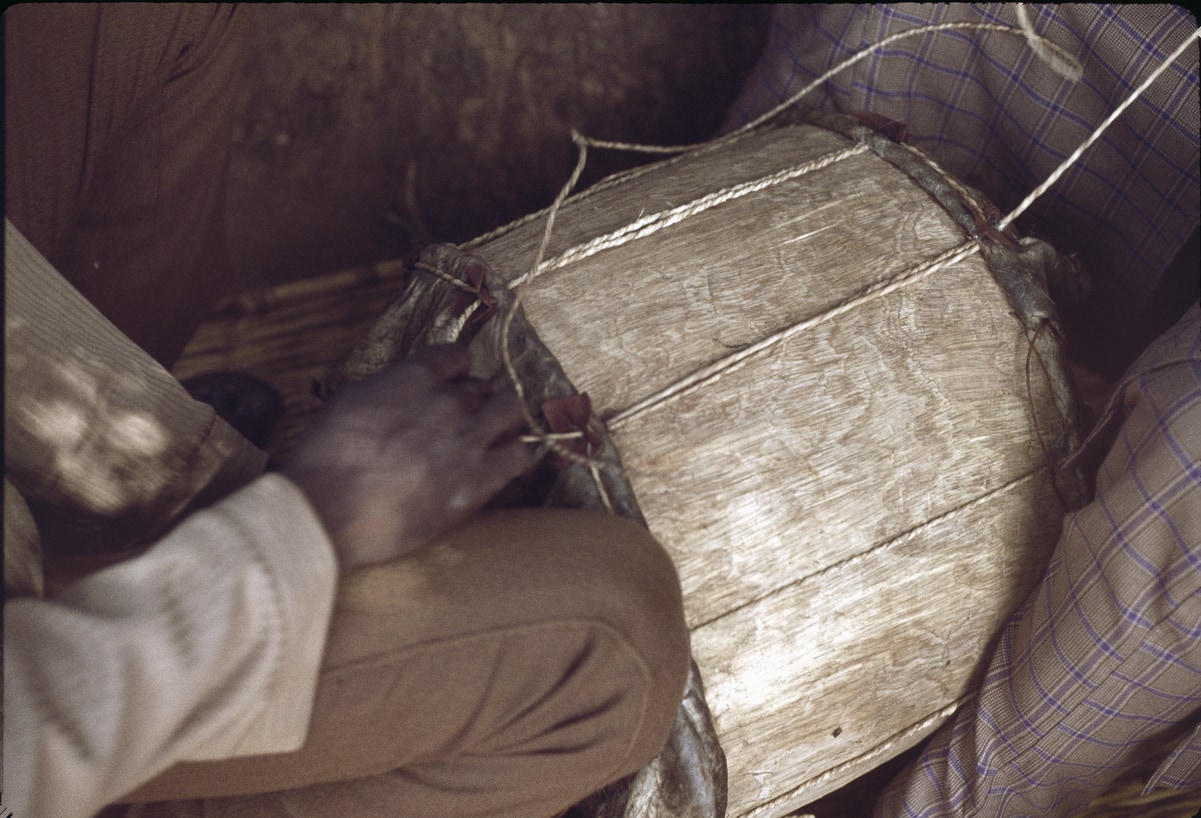
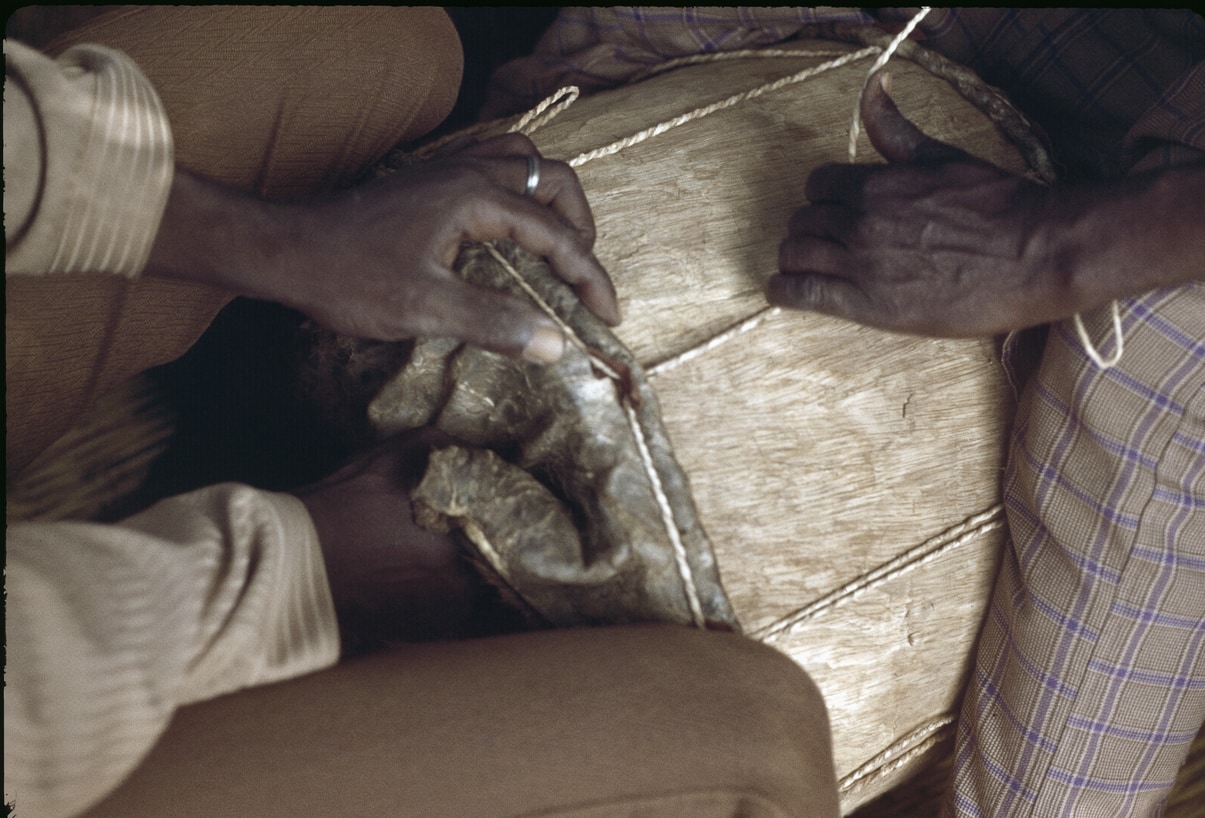
Two people use teamwork to lace the guŋgɔŋ: one person holds the string against the rope seat while the other pulls.
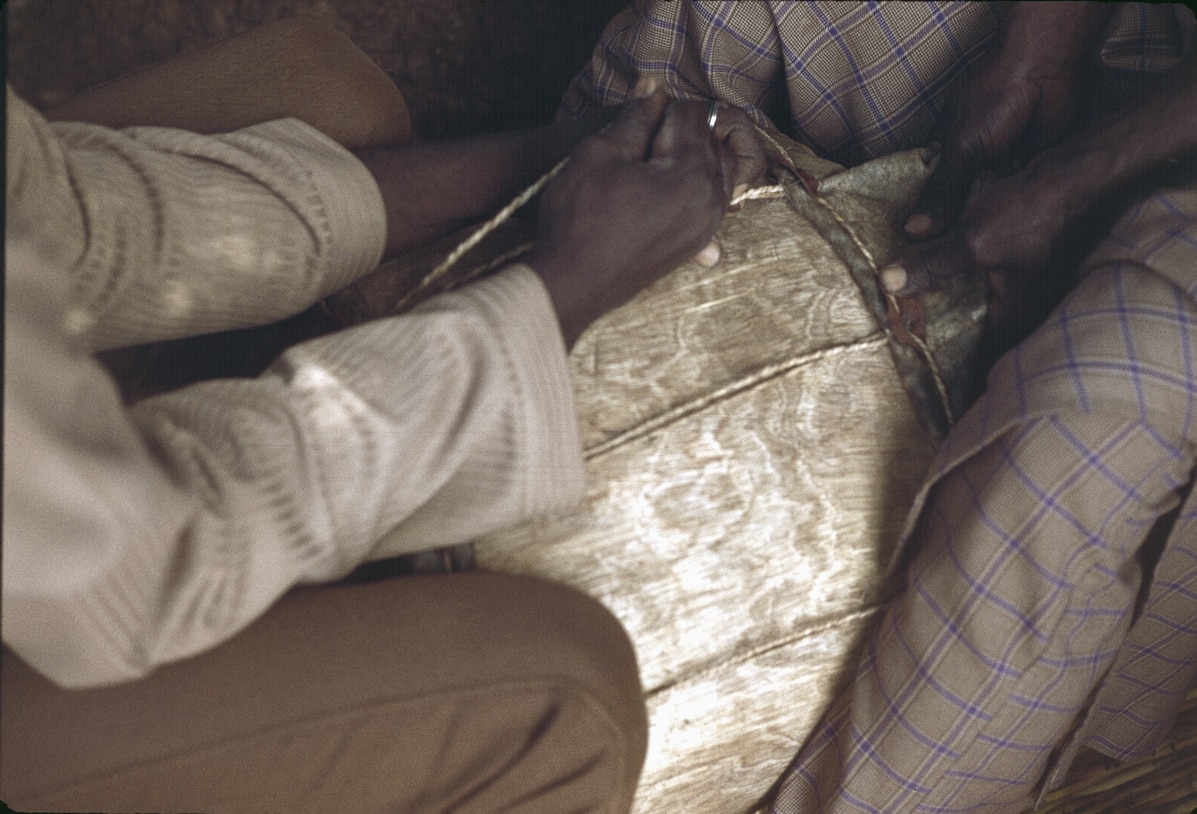
The sewing continues around the guŋgɔŋ.
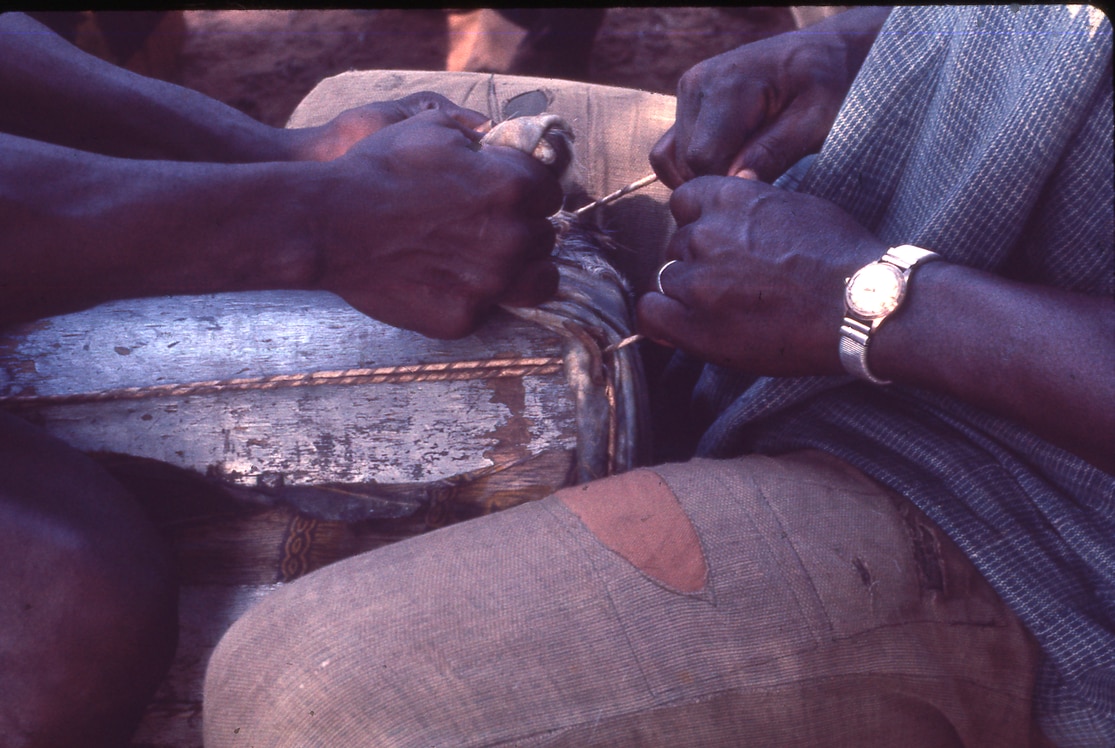
There is a loop at the starting point of the sewing. When the leather string has reached back to the starting point,
it is tied to the loop.
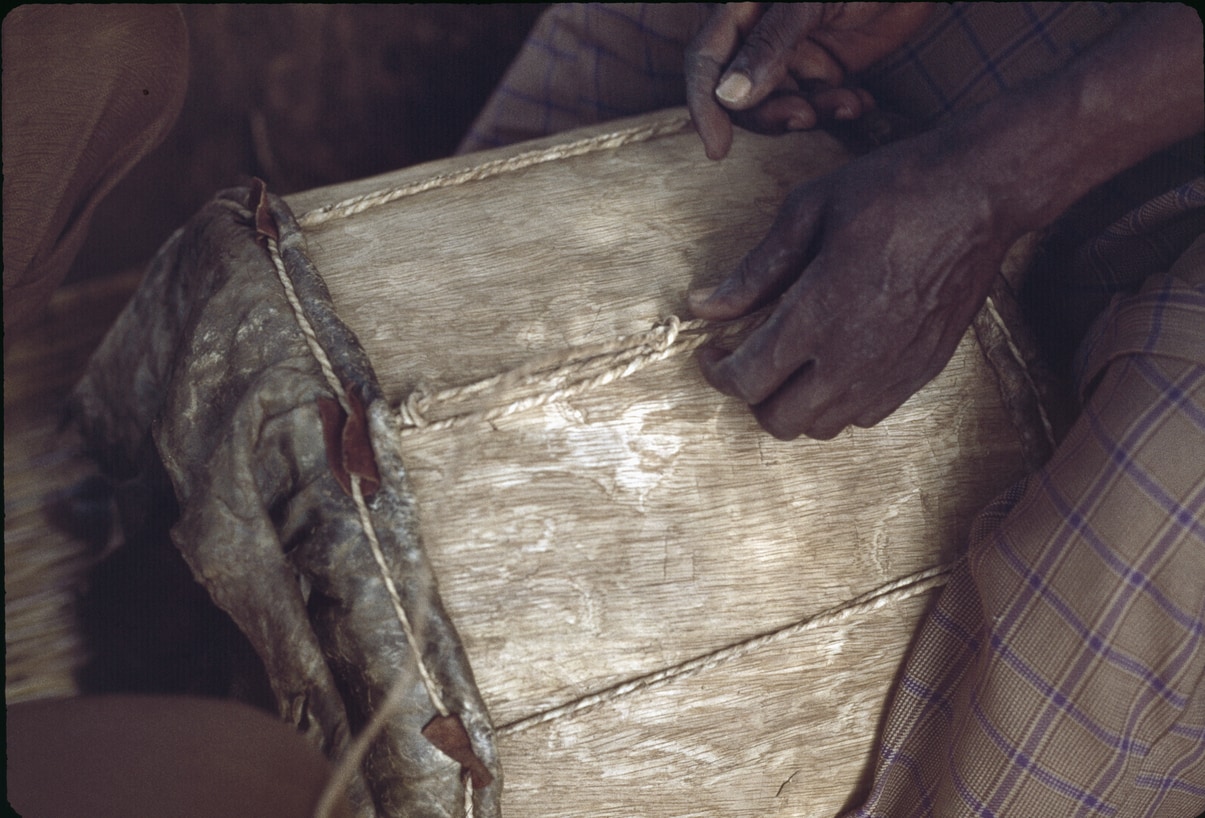
When the lacing is finished, the excess skin is trimmed away. The trimmed edge is laced to dry and conform
to the guŋgɔŋ's mouth.
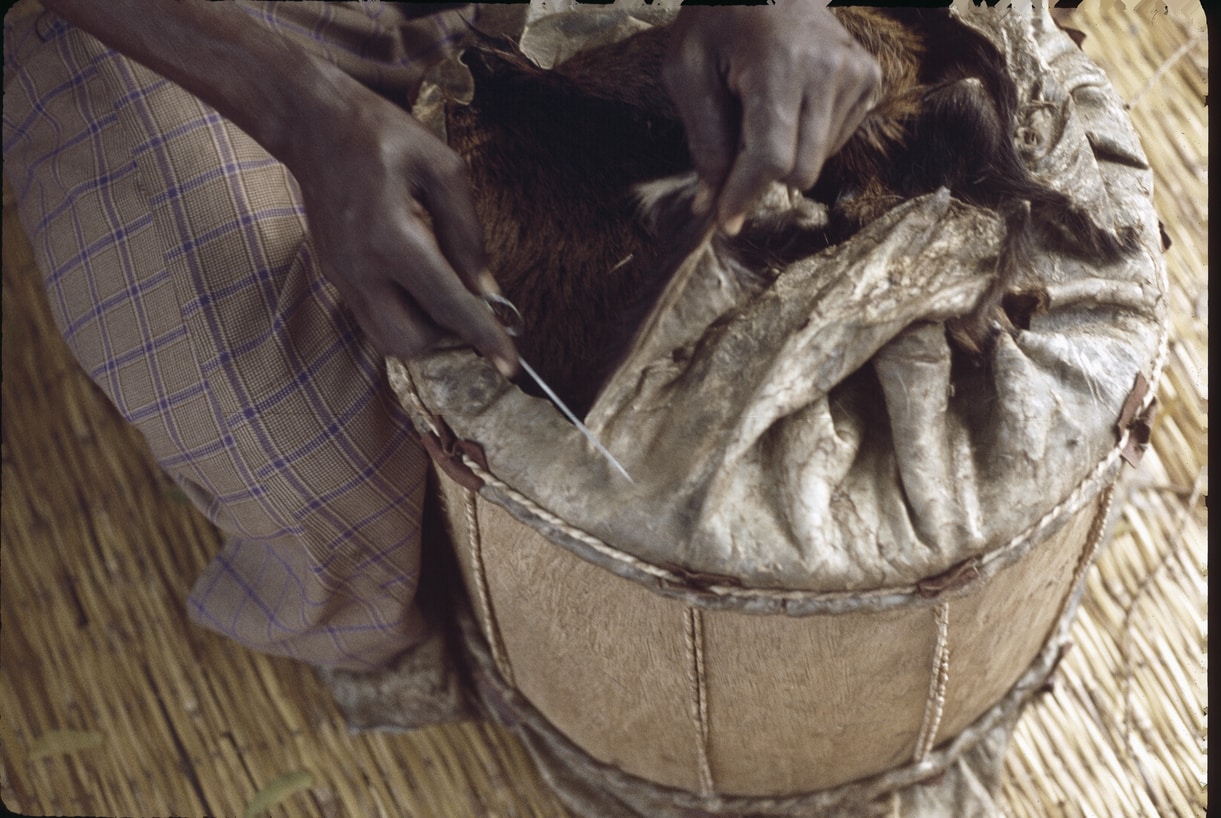
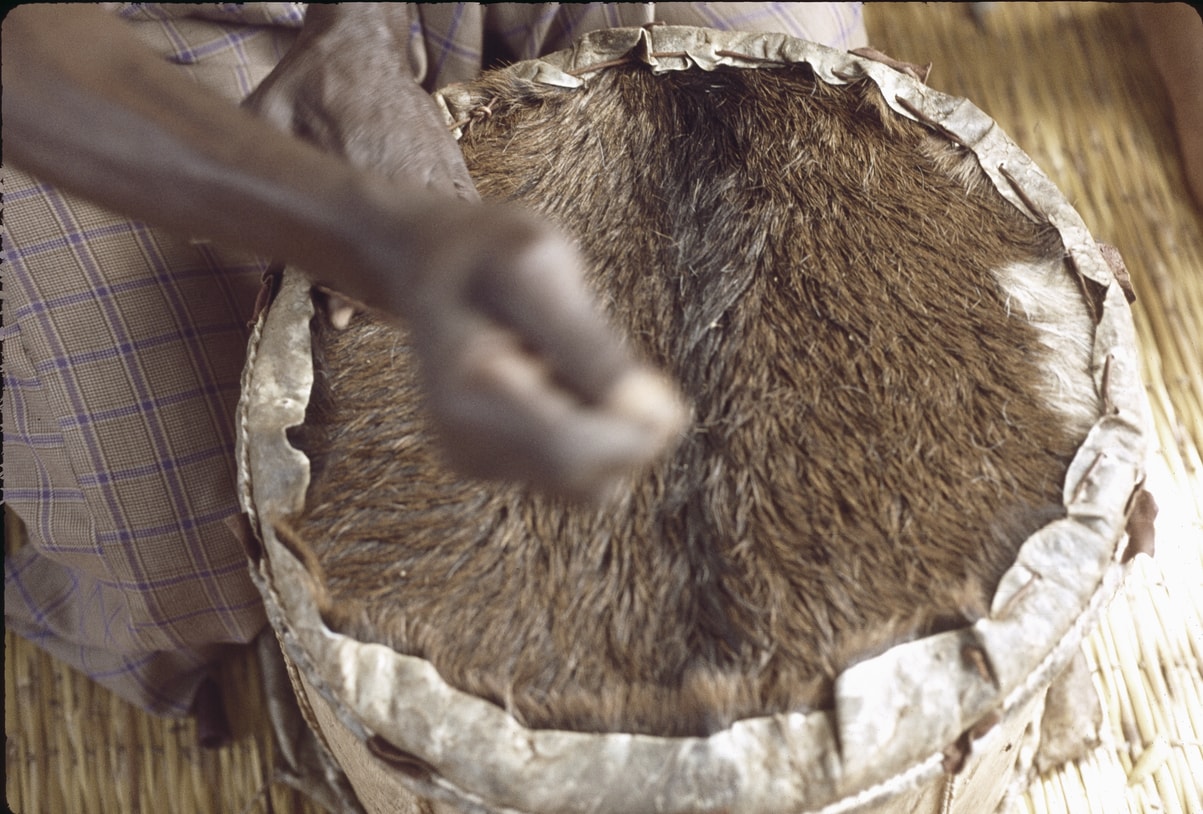
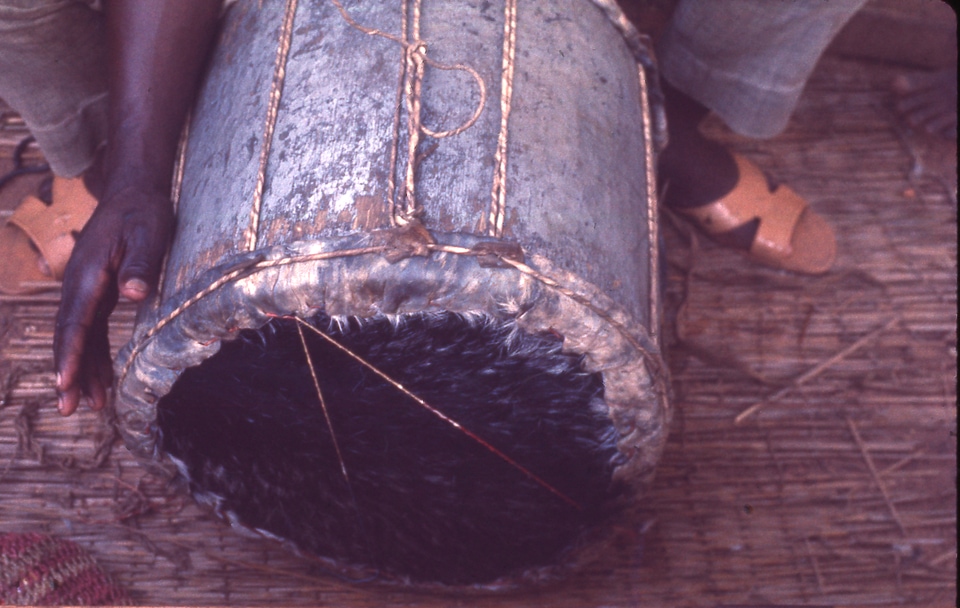
When the skin of the guŋgɔŋ is dry, the excess is trimmed again, and the hair is scraped or shaved away with a sharp knife or razor blade.
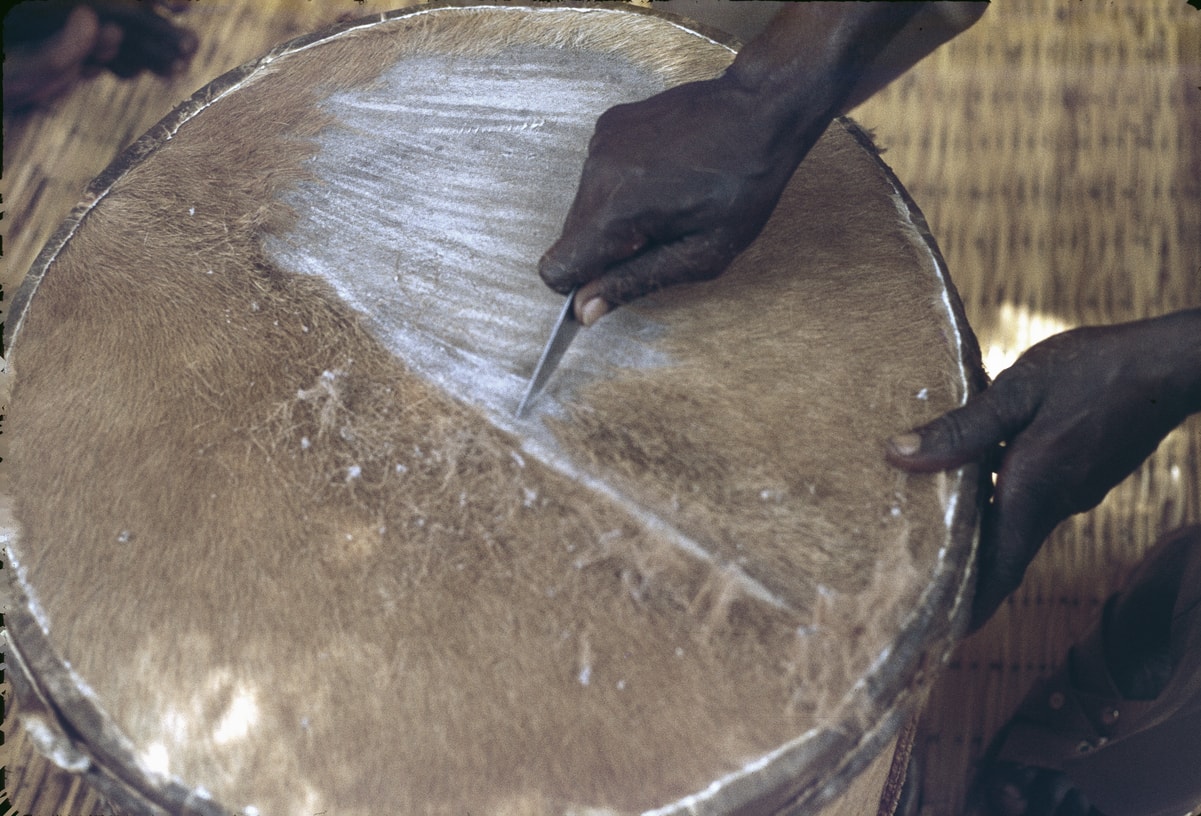
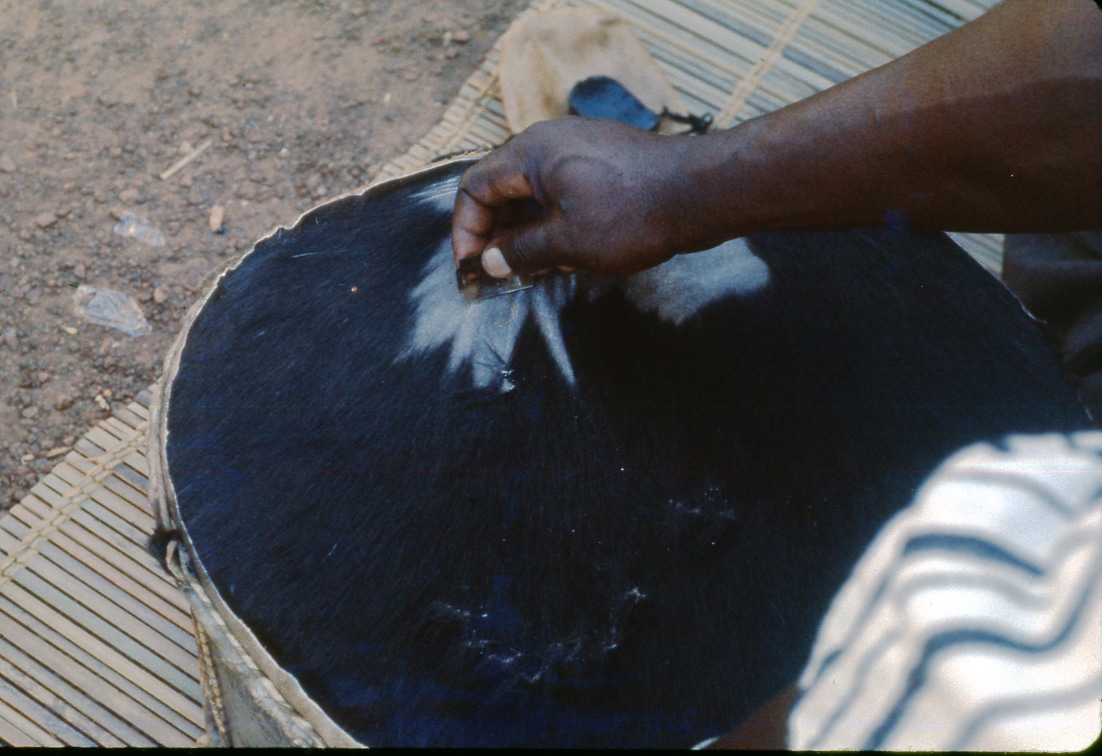
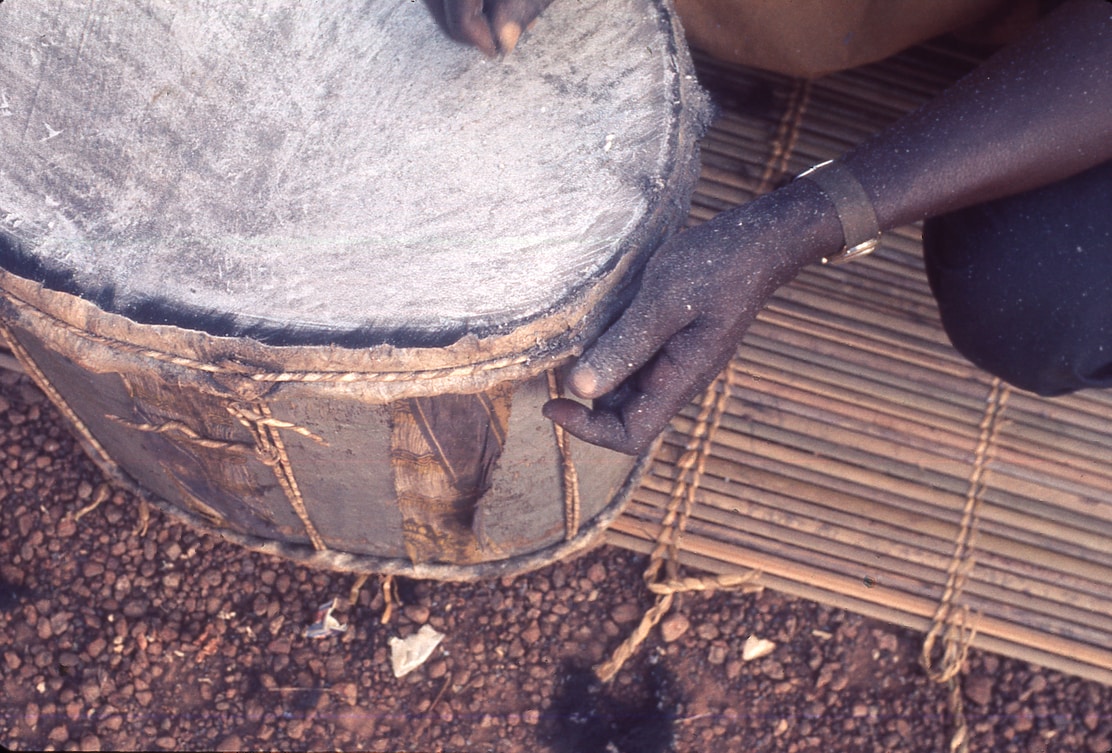
The guŋgɔŋ can be dressed with cloth or leather between the strings and the wood. The chahirga, the small leather string that makes the buzzing sound, is clearly visible. At the bottom of the image, one can see the loop of string under the seating rope to which the shoulder strap is attached.
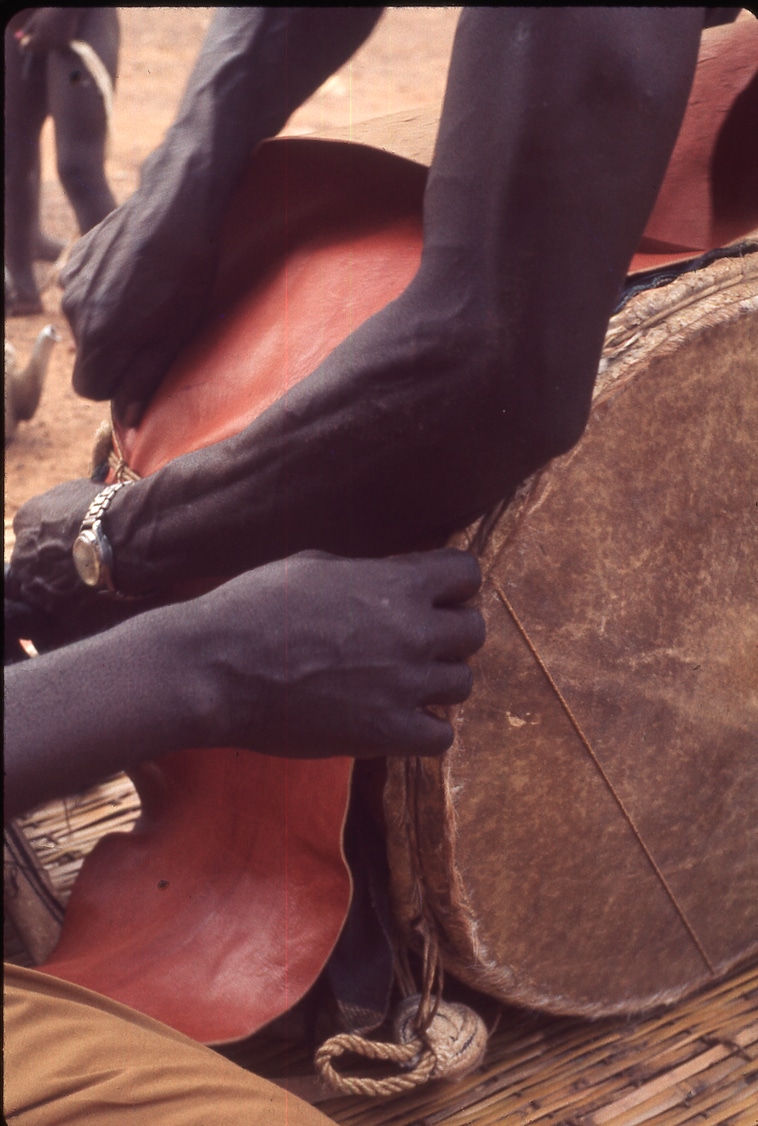
A sewn guŋgɔŋ and a lundaa next to a workspace. The image detail shows the gbandarigara, the leather strips used to pull the gbandaa (the sewing strings) and tighten the mouth of the guŋgɔŋ.
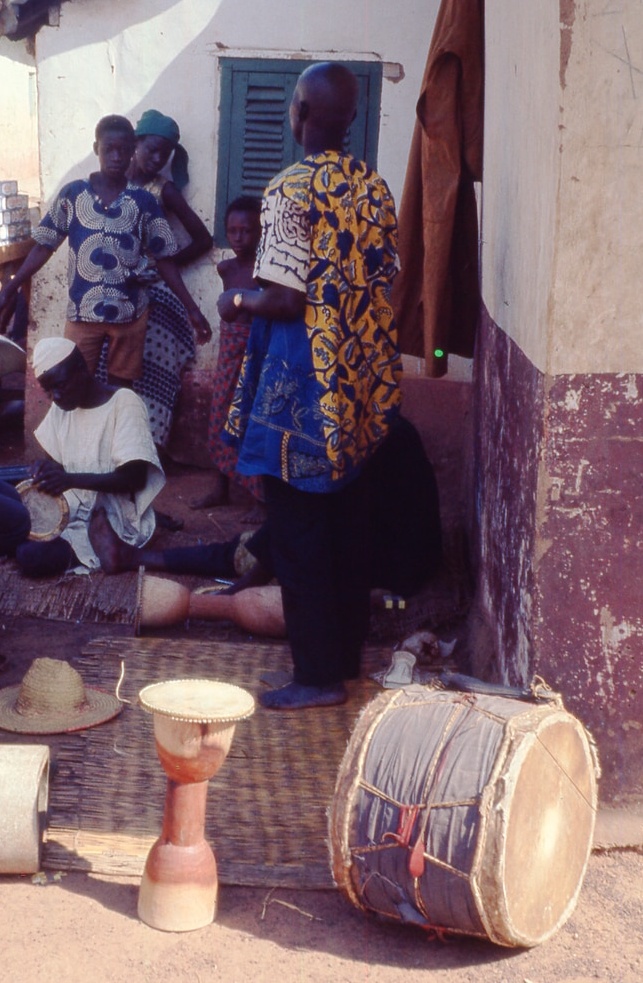
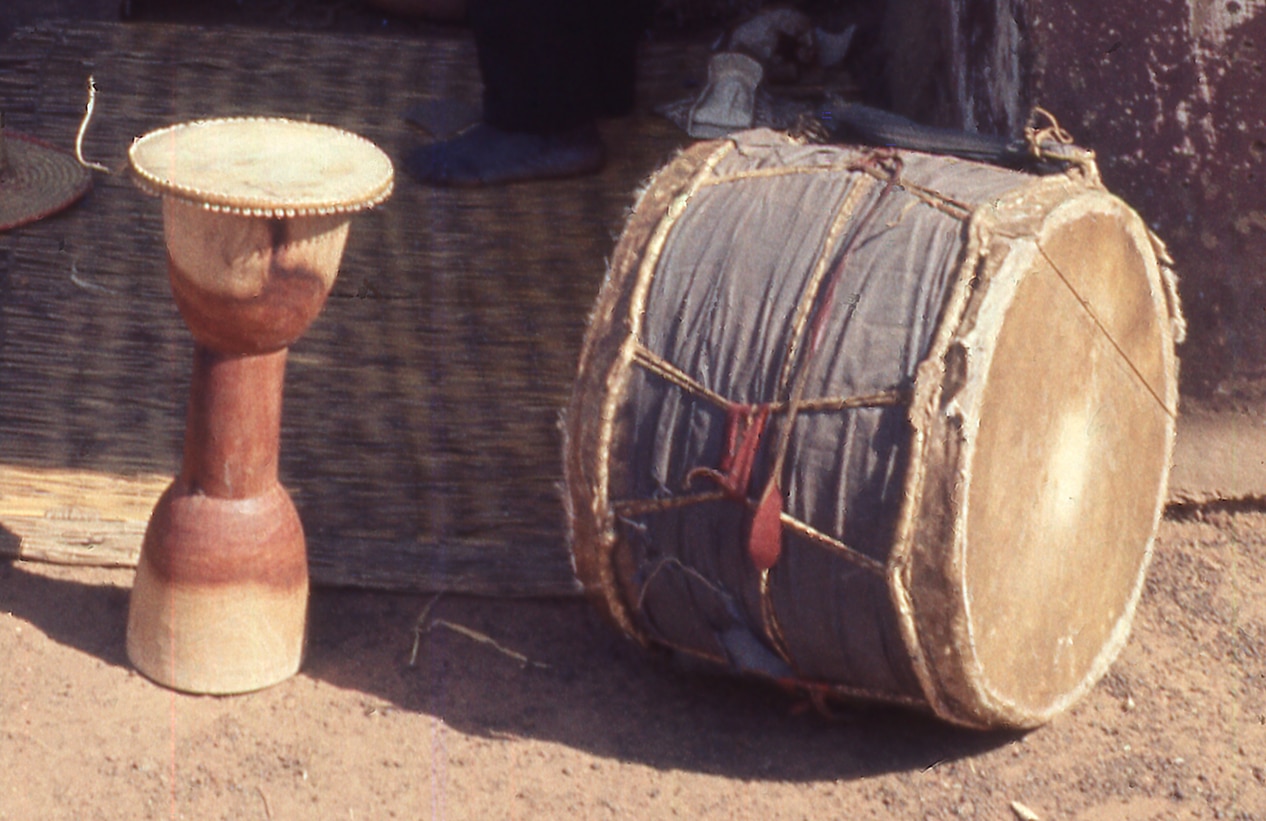
The guŋgɔŋ is hung over the shoulder, braced with the left arm. The left hand beats the edge of the drum, and the fingers help to control the sound.
